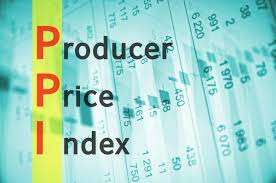The Ghana Statistical Service has announced that the year-on-year inflation rate at ex-factory prices for all goods and services reached 16.5% in March 2024, up from 12.5% in February 2024. Additionally, the month-on-month producer inflation rate stands at 4.3%.
The Construction sector topped the list with a staggering 56.5% year-on-year inflation, marking the highest increase. Following closely were Electricity and Gas at 27.0%, and Mining and Quarrying at 26.7%.
In contrast, some sectors experienced relatively lower inflation rates. Water Supply, Sewerage, and Waste stood at 7.4%, while Manufacturing and Information and Communication recorded 7.1% and 6.2%, respectively, for their year-on-year inflation.
Also, the Electricity and Gas sector saw a notable jump in inflation from February to March 2024. The rate surged from 19.5% in February to 27.0% in March, marking a substantial increase of 7.5 percentage points within a month.
Within the Manufacturing sub-sector, 11 sub-groups reported inflation rates surpassing the sub-sector average. Among them were the Manufacture of Motor Vehicles and Trailers, which hit 65.2%, followed by the Manufacture of Beverages at 38.4%, and the Manufacture of Wearing Apparel at 24.0%.
Furthermore, inflationary pressures within the Services sector showed notable variations, as per data from official sources. Air Transport led the pack with a substantial 30.5% year-on-year inflation, followed closely by Postal and Courier Activities at 25.0%, and Programming and Broadcasting Activities at 19.3%.
In the Transport and Storage sub-sector, for instance, the Service producer price inflation saw a modest uptick of 0.9 percentage points, rising from 11.2% in February 2024 to 12.1% in March 2024.
Similarly, the Accommodation and Food Services subsector experienced a significant increase in inflation, jumping by 5.5 percentage points to reach 20.9%.
Contrastingly, the Information and Communication sub-sector maintained a relatively stable inflation rate of 6.2%.
Meanwhile, the producer price inflation in the industry sector excluding the construction sector increased to 20.7% in March 2024 from 11.8% in February 2024. The rate in the construction sector increased to 56.5%.
What It All Means

The data generally paints a picture of escalating inflationary pressures within the Ghanaian economy, with profound implications for various sectors and stakeholders.
The notable uptick in the year-on-year inflation rate, soaring from 12.5% in February 2024 to 16.5% in March 2024, underscores a rapid acceleration in the pace of price increases across all goods and services.
Such a steep rise in inflation indicates a pervasive surge in production costs, likely stemming from many factors including supply chain disruptions, rising energy prices, and global economic dynamics.
The sectoral breakdown reveals a stark contrast among industries, with the construction sector emerging as the hardest hit, registering an alarming 56.5% year-on-year inflation rate.
This surge in construction costs not only impacts infrastructure projects but also has ripple effects throughout the economy, influencing housing prices and overall investment sentiment.
Similarly, the electricity and gas sector experienced a substantial inflationary leap to 27.0%, highlighting the challenges faced in the energy supply chain, which could potentially lead to higher utility bills for consumers and increased operational costs for businesses reliant on energy-intensive processes.
Within the manufacturing sector, disparate inflation rates among sub-groups underscore the sector’s heterogeneous nature.
While some segments such as the manufacture of motor vehicles and beverages witnessed soaring inflation rates, others remained relatively stable.
Such divergent trends within manufacturing may reflect varying degrees of exposure to input cost fluctuations and demand dynamics.
Looking ahead, stakeholders should brace themselves for continued inflationary pressures, which could translate into higher consumer prices, squeezed profit margins for businesses, and potentially dampened investment sentiment.
Consumers may find themselves grappling with increased living costs, particularly in sectors experiencing pronounced inflationary spikes.
Businesses, on the other hand, may need to reassess pricing strategies, explore avenues for cost containment, and adapt to changing market dynamics to navigate the challenging operating environment.
READ ALSO: Ability To Generate Power Not Cause Of Power Outage



















